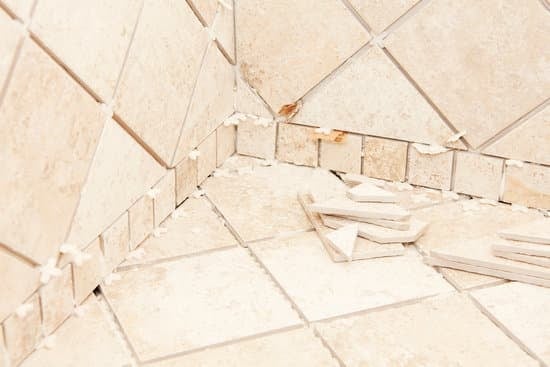If you’re considering making home improvements, refinancing your mortgage can be a smart financial move. Not only can it provide the funds necessary for renovations, but it also offers several additional benefits. By refinancing, homeowners have the opportunity to secure lower interest rates, increase their property value, and potentially enjoy tax benefits.
Lower interest rates are one of the primary advantages of refinancing a mortgage for home improvements. With today’s historically low interest rates, homeowners can take advantage of potentially significant savings over the life of their loan. By refinancing at a lower rate, they can reduce their monthly payments, freeing up cash for other expenses or further investments in their home.
Furthermore, refinancing for home improvements has the potential to increase property value. Renovations can enhance both aesthetic appeal and functionality, making the home more attractive to future buyers. As a result, when it comes time to sell, homeowners may be able to command a higher selling price and recoup some or all of their renovation costs.
Additionally, there may be potential tax benefits associated with refinancing for home improvements. While individual circumstances vary, homeowners should consult with a tax professional to determine if they qualify for any deductions or credits related to their renovations.
In this article on how to refinance a mortgage plus more for home improvements, we will explore the various aspects involved in the refinancing process. From assessing your home improvement needs and researching financing options to preparing your finances and finding the right lender, we will guide you step-by-step through this important decision-making journey. So let’s dive in and discover how you can make your dream home a reality through mortgage refinancing.
Assessing Your Home Improvement Needs
When embarking on a home improvement project, it is crucial to assess the scope of renovations before diving in. By taking the time to evaluate your needs and goals, you can ensure a comprehensive plan that aligns with your budget and objectives. Here are some key steps to help you assess your home improvement needs effectively.
Identify Priorities
Before starting any renovation project, it is important to identify your priorities. Determine which areas of your home need immediate attention and which improvements will provide the most value. Take into consideration factors such as functionality, safety, and aesthetics. For example, if your kitchen is outdated and in need of repairs, prioritize this area before moving on to less pressing projects.
Set a Realistic Budget
Next, establish a realistic budget for your home improvements. Consider how much you are willing to spend and how much return on investment (ROI) you expect from each renovation. Research the average costs of similar projects and consult with contractors or industry professionals for more accurate estimates. Remember to include additional funds for unexpected expenses that may arise during the renovation process.
Seek Professional Advice
Consulting with professionals can provide valuable insights into assessing your home improvement needs properly. Reach out to architects, interior designers, or contractors who specialize in renovations to help evaluate your space and identify potential issues that may require attention. Their expertise will ensure that you consider all aspects of your project and make informed decisions about what improvements are necessary.
Consider Long-Term Goals
When assessing your home improvement needs, it is vital to consider your long-term goals for the property as well. Think about how long you plan on staying in the house and whether certain renovations will add value if you decide to sell in the future. For example, energy-efficient upgrades or adding an additional bathroom may increase the overall value of your home and attract potential buyers.
Evaluate DIY vs. Hiring Professionals
Finally, evaluate whether you have the skills and time to tackle certain renovations as do-it-yourself (DIY) projects or if it would be more beneficial to hire professionals. Be honest with yourself about your capabilities and consider the complexity of the project. Keep in mind that some renovations, such as major structural work or electrical modifications, require professional expertise for safety and compliance reasons.
By carefully assessing your home improvement needs, you can create a well-planned renovation strategy that addresses your priorities while staying within budget. Remember to be realistic about what is feasible for your situation and always seek professional guidance when needed. With a clear understanding of the scope of your renovations, you’ll be better prepared to refinance your mortgage and turn your house into the dream home you envision.
Researching Refinancing Options
Exploring Cash-out Refinance
One of the refinancing options available for those looking to fund home improvements is a cash-out refinance. With a cash-out refinance, homeowners can replace their existing mortgage with a new one that is larger than the current loan balance. The difference between the two amounts is then given to the homeowner in cash, which can be used for various purposes like funding renovations.
Cash-out refinancing offers several advantages. First and foremost, it allows homeowners to tap into their home equity, which may have grown over time due to appreciation or paying down the mortgage. Additionally, since mortgage interest rates are often lower than other forms of financing such as personal loans or credit cards, homeowners may benefit from lower interest payments on the increased loan amount.
However, before considering a cash-out refinance, homeowners must carefully assess their financial situation. It’s crucial to determine if taking on additional debt through this type of refinancing aligns with long-term financial goals and affordability. Consulting with a financial advisor or mortgage professional can provide valuable guidance in deciding if a cash-out refinance is the right option.
Understanding Home Equity Loans and Lines of Credit
Another option for financing home improvements through refinancing is utilizing home equity loans or home equity lines of credit (HELOC). Both options involve using the equity in your home as collateral to secure a loan specifically for renovations.
A home equity loan provides borrowers with a lump sum payment based on their available equity. This loan usually has a fixed interest rate and set monthly payments throughout its term. On the other hand, a HELOC operates like a credit card where borrowers can withdraw funds up to their approved credit limit during an initial draw period.
When considering these options, it’s important to compare interest rates and repayment terms among different lenders. Homeowners should also be mindful of any potential fees associated with these types of loans, such as origination fees or annual maintenance fees for HELOCs. Thoroughly reviewing these factors will help homeowners make an informed decision regarding the best refinancing option for their home improvement goals.
Examining Mortgage Refinance Terms
When exploring mortgage refinancing options, it is crucial to thoroughly understand loan terms and repayment plans. Homeowners should consider the impact of choosing various loan terms on their monthly payments and overall financial situation.
For some homeowners, a shorter-term loan with higher monthly payments may be more desirable as it allows them to pay off their mortgage sooner and build equity faster. On the other hand, others may prefer a longer-term loan with lower monthly payments to provide financial flexibility in the short term.
Additionally, examining interest rates closely is essential when researching refinancing options. Even a slight difference in interest rates can significantly affect long-term savings or costs. Comparing rates from different lenders and understanding how those rates can change over time will help homeowners choose the most suitable refinancing option for their circumstances.
By thoroughly researching and understanding refinancing options like cash-out refinance, home equity loans, and lines of credit, homeowners will have the knowledge needed to make an informed decision about funding their home improvements through mortgage refinancing.
Preparing Your Finances
Before embarking on the process of refinancing your mortgage for home improvements, it is crucial to assess your finances, particularly your credit score and debt-to-income ratio. These factors play a significant role in determining the interest rates and terms you may be offered by lenders. By taking the time to understand and improve these aspects of your financial situation, you can increase your chances of securing a favorable refinancing option.
Firstly, let’s discuss the importance of a good credit score. Lenders use credit scores to assess the risk associated with lending money to borrowers. A higher credit score indicates a lower risk, making you eligible for better interest rates and loan terms.
It’s recommended to obtain a copy of your credit report from each of the three major credit bureaus – Experian, Equifax, and TransUnion – and review them for any errors or discrepancies. If you find any inaccuracies, make sure to dispute them promptly.
Improving your credit score takes some time and effort. Start by paying all bills on time consistently and reduce any outstanding debts. Keeping credit card balances low, ideally below 30% of the available limit, can also positively impact your score.
In addition to a good credit score, lenders will evaluate your debt-to-income (DTI) ratio when considering your application for mortgage refinancing. The DTI ratio is calculated by dividing total monthly debts by gross monthly income and multiplying the result by 100 to get a percentage. Generally, lenders prefer borrowers with DTI ratios below 43%. However, the lower the ratio is, the more attractive you become as a borrower.
In order to improve this ratio, focus on reducing existing debts before applying for refinancing. This could involve paying off or consolidating high-interest loans or credit card balances. Additionally, consider increasing your income through additional sources such as part-time work or freelance opportunities. Demonstrating a stable and manageable debt-to-income ratio is essential to positioning yourself for the best refinancing options.
It’s important to note that lenders may have different credit score and debt-to-income requirements, so it’s necessary to research and compare various lenders to find one that suits your financial situation. By taking the time to assess and improve your credit standing and debt-to-income ratio, you can enhance your chances of securing a favorable refinancing opportunity for your home improvements.
| Credit Score Range | Interest Rate Range |
|---|---|
| Excellent (800-850) | 2.5%-3.0% |
| Very Good (740-799) | 3.0%-3.5% |
| Good (670-739) | 3.5%-4.0% |
Finding the Right Lender
Finding the right lender is crucial when it comes to refinancing your mortgage for home improvements. It’s important to do thorough research, read reviews, and consult industry professionals to ensure you choose a reputable lender who specializes in mortgage refinance. Here are some tips and resources to help you find the right lender:
- Research Online: Start your search by looking for lenders online. Visit their websites to gather information about their services, rates, and customer reviews. Look for lenders who have expertise in mortgage refinancing for home improvements.
- Read Reviews: Read reviews from previous customers to get a sense of their experience with the lender. Look for lenders with positive feedback and success stories from other homeowners who have refinanced their mortgages for home improvements.
- Consult Industry Professionals: Reach out to mortgage brokers or financial advisors who specialize in refinancing options. They can provide valuable insights and recommendations based on their expertise and knowledge of the industry.
- Compare Interest Rates and Closing Costs: Different lenders may offer varying interest rates and closing costs for mortgage refinance. It’s essential to compare these aspects among different providers to determine the most cost-effective option.
- Consider Customer Service: Pay attention to how responsive and helpful the lender’s customer service team is during your initial interactions with them. A responsive and professional team can make the refinancing process smoother and more transparent.
- Check Accreditation: Verify if the lender is accredited or affiliated with any reputable industry organizations or associations. This can be an indicator of their reliability and adherence to ethical practices.
- Get Recommendations: Ask friends, family members, or colleagues who have recently refinanced their mortgages for home improvements if they had a positive experience with a particular lender.
Remember that finding the right lender is just one step towards successfully refinancing your mortgage for home improvements. It’s important to evaluate multiple options, compare terms and rates carefully, as well as assess your specific needs before making a decision. By taking the time to find the right lender, you can ensure a smooth and beneficial refinancing process.
Applying for a Mortgage Refinance
Refinancing a mortgage can be a complex process, but with the right knowledge and guidance, it can be a smooth and successful endeavor. When it comes to applying for a mortgage refinance for home improvements, having a step-by-step guide can help you navigate through the process effectively. Here is a comprehensive guide to applying for a mortgage refinance:
- Research and Compare Lenders: Start by researching reputable lenders who specialize in refinancing mortgages for home improvements. Look for lenders who offer competitive interest rates, favorable repayment terms, and excellent customer service. It’s also essential to read reviews and consult with industry professionals to ensure you’re making an informed decision.
- Gather Necessary Documents: Before applying for a mortgage refinance, you’ll need to gather certain documents such as pay stubs, W-2 forms, bank statements, tax returns, and proof of homeowners insurance. Having these documents ready can expedite the application process.
- Calculate your Debt-to-Income Ratio: Your debt-to-income (DTI) ratio is an important factor that lenders consider when evaluating your eligibility for refinancing. To calculate your DTI ratio, divide your total monthly debt payments by your gross monthly income and multiply the result by Aim for a DTI ratio below 43%, as it demonstrates your ability to manage your debts effectively.
- Fill out the Application: Once you’ve chosen a lender and gathered all the necessary documents, it’s time to fill out the application form accurately and completely. Be prepared to provide information about your employment history, income sources, assets, liabilities, and other relevant details.
- Submitting the Application: After completing the application form, submit it along with all the required documents to your chosen lender either through their online portal or in person at their office.
- Await Loan Approval: Once your application is submitted, the lender will review it along with your supporting documents. This process usually takes a few weeks. During this time, the lender may request additional information or documentation. Stay in touch with your lender and promptly provide any requested information to expedite the approval process.
- Close on the Loan: If your application is approved, you’ll move on to the closing phase. At this stage, you’ll review and sign all necessary loan documents, pay any closing costs or fees required by the lender, and complete any remaining paperwork. Once everything is finalized, your existing mortgage will be paid off, and a new mortgage for refinancing purposes will be established.
Remember that each step of the application process requires careful attention to detail to ensure a successful mortgage refinance for home improvements. By following this step-by-step guide and working with a reputable lender, you can navigate through the process smoothly and unlock the financial benefits of refinancing for home improvements.
Understanding the Appraisal Process
The appraisal process is a crucial step when considering refinancing a mortgage for home improvements. Understanding this process and maximizing the value of your home can help you secure a favorable loan amount and potentially access more funds for your renovation project. In this section, we will delve into the details of the appraisal process and provide strategies to increase your home’s value before the assessment.
During an appraisal, a professional appraiser will evaluate your property to determine its market value. This valuation is based on various factors such as the size and condition of the home, its location, comparable properties in the area, and recent sales data. The appraiser’s report plays a significant role in determining how much lenders are willing to lend for your refinancing needs.
To maximize the value of your home during an appraisal, there are several steps you can take. First, focus on enhancing curb appeal. A well-maintained exterior creates a positive first impression and increases perceived value. Consider repainting the front door, improving landscaping, or fixing any visible damages.
Additionally, addressing necessary repairs before the appraisal can make a significant difference in your home’s value. Fixing leaky faucets, repairing broken windows or doors, and replacing damaged flooring are all worthwhile investments that can positively impact the appraised value.
Lastly, showcasing desirable features of your home can also help boost its valuation. Highlight any recent upgrades or improvements you’ve made, such as renovated bathrooms or kitchens, energy-efficient appliances, or updated HVAC systems. Providing documentation of these enhancements to the appraiser can ensure they are taken into consideration during the valuation process.
By understanding how appraisals work and implementing strategies to improve your home’s value before an assessment, you increase your chances of securing a higher loan amount for your refinancing needs. Maximize curb appeal, address necessary repairs, and showcase desirable features to make a positive impact on the appraisal and ultimately improve your chances of funding your desired home improvements.
| Steps to Maximize Home Value | Benefits |
|---|---|
| Enhance curb appeal: repaint the front door, improve landscaping | – Creates a positive first impression
|
| Address necessary repairs: fix leaks, broken windows or doors, damaged flooring | – Improves overall condition of the home
|
| Showcase desirable features: highlight recent upgrades or improvements | – Demonstrates value-added enhancements
|
Closing the Deal
Once you have gone through the process of researching, preparing, and applying for a mortgage refinance for home improvements, it is time to close the deal. This section will guide you through the final steps of reviewing loan terms, signing documents, and making the most of your refinanced funds.
Before finalizing any loan agreement, it is crucial to review the loan terms thoroughly. Take the time to understand the interest rate, repayment terms, and any applicable fees or penalties. If there are any unclear or confusing aspects of the loan agreement, don’t hesitate to ask questions and seek clarification from your lender. It’s important to ensure that you fully understand what you’re getting into before signing any documents.
When it comes time to sign the documents, make sure you carefully read all of them. Pay attention to details such as spelling errors or incorrect information. If something doesn’t look right or if there are any discrepancies compared to what was previously discussed with your lender, address them immediately. It’s essential to have everything accurate and in line with your expectations before proceeding.
Once you have successfully closed on your refinanced mortgage, it’s time to make the most of your funds for home improvements. Create a budget that outlines how much money will be allocated for each renovation project. Prioritize repairs or updates that add value to your home or improve its functionality. Consider hiring reputable contractors who specialize in home improvement projects and have a track record of delivering quality work within budget and on schedule.
Conclusion
In conclusion, refinancing a mortgage for home improvements can be a wise financial move with numerous benefits. By taking advantage of lower interest rates, homeowners not only have the opportunity to reduce their monthly mortgage payments but also increase the value of their property through strategic renovations. Additionally, there may be potential tax benefits associated with using refinanced funds for home improvements.
Assessing your home improvement needs is crucial in order to prioritize renovations and ensure they align with your budget and goals. It is important to evaluate the scope of renovations and create a comprehensive plan that addresses both cosmetic and structural changes. By doing so, you can make informed decisions about which areas of your home deserve attention and allocate your refinanced funds accordingly.
Researching refinancing options is another essential step in the process. Understanding the different choices available, such as cash-out refinance, home equity loans, or home equity lines of credit, allows you to select the most suitable option for your specific circumstances. Comparing interest rates, closing costs, and repayment terms from various lenders will help you secure the best deal.
Preparing your finances is key to a successful mortgage refinance for home improvements. Improving your credit score and evaluating your debt-to-income ratio will increase your chances of qualifying for favorable loan terms. Finding the right lender requires thorough research, reading reviews, and seeking guidance from industry professionals to ensure a reputable partnership.
Applying for a mortgage refinance involves following a step-by-step guide that outlines what documents are required and highlights common pitfalls to avoid. Understanding the appraisal process is crucial in maximizing the value of your home before assessment by enhancing curb appeal, addressing necessary repairs, and showcasing desirable features.
Finally, closing the deal involves reviewing loan terms, understanding closing costs, and effectively utilizing refinanced funds for home improvements through careful budgeting and project management skills.
Frequently Asked Questions
Can I increase my mortgage for home improvements?
Yes, it is possible to increase your mortgage for home improvements. This can be done through a process called a cash-out refinance, where you refinance your existing mortgage for a higher amount than what you currently owe and receive the difference in cash. By using this additional cash, you can fund your home improvement projects.
However, it’s important to carefully consider the costs and potential risks associated with increasing your mortgage. Make sure that the increased monthly payments and interest charges are manageable within your budget.
Can I refinance my home to make repairs?
Refinancing your home to make repairs is another option that homeowners have. By refinancing, you can potentially secure a lower interest rate or extend the loan term, which could help reduce monthly mortgage payments and provide extra funds for repairs.
However, it’s crucial to assess whether refinancing is the most cost-effective solution for financing repairs. Consider factors such as closing costs associated with refinancing and compare them against other available options like personal loans or home equity loans.
Is it worth refinancing to remodel?
Whether it’s worth refinancing to remodel depends on various factors specific to each individual’s circumstances. Refinancing for remodeling purposes can offer advantages such as potentially lower interest rates and spreading out renovation costs over an extended loan term. It could also increase the value of your home if executed properly.
However, it’s essential to consider the cost of refinancing, including any associated fees and potential long-term financial implications. Evaluate different financing options available to determine if refinancing is indeed the most beneficial path towards achieving your remodeling goals while staying financially sound in the long run.

I’m thrilled to have you here as a part of the Remodeling Top community. This is where my journey as an architect and remodeling enthusiast intersects with your passion for transforming houses into dream homes.





